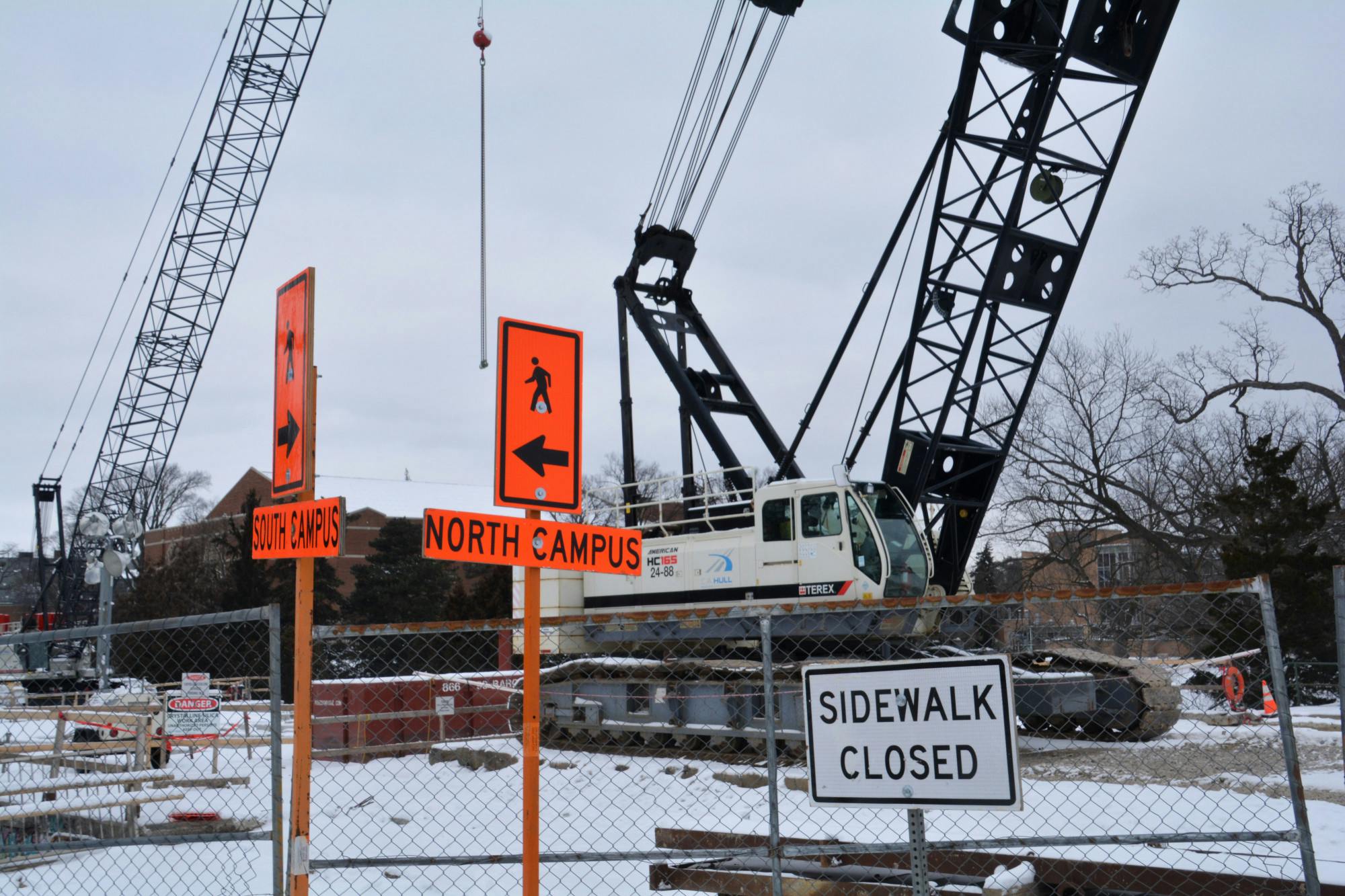Many students use Capital Area Transportation Authority, or CATA, buses when traveling to class, but this semester, some students have found navigating the new bus routes to be a bumpy ride. Road work on Farm Lane has affected nine CATA bus routes since December, according to CATA alert details.
Farm Lane Bridge is open to pedestrians but not vehicles, and it will continue to be closed to vehicles until June, according to CATA.
African American studies junior Kyla Hardy believes late buses affect off-campus and on-campus students equally. On-campus students are unlikely to have cars when living in dorms, while many off-campus students like Hardy must travel a distance to attend classes.
Hardy uses route 26 to get to campus. Route 26 buses usually travel along Abbott Road and Farm Lane, but due to the road work, route 26 switched from Farm Lane to Bogue Street.
"The buses are just really delayed," Hardy said. "The Transit app usually never works that well, but now it's been really bad."
Hardy said the Transit app hasn't been fully updated since the routes changed. The Transit app includes bus stops for routes that no longer apply, meaning students may wait at a bus stop for a nonexistent ride.
In the fall semester, Hardy waited at the bus stop for five to 10 minutes, but now that wait can last almost half an hour.
"I'm gonna tough it out," she said. "I don't really have another choice. I'll probably leave (my apartment) an hour or two earlier because of it."
Mathematics sophomore Austin Paul and computer science sophomore Adhvik Kolar live on campus, using buses 30 and 31 to get to class. Route 31 used to go on Farm Lane to travel from Brody Neighborhood to East Neighborhood on the other side of campus.
This spring semester, waiting at their bus stops can take over an hour-and-a-half.
"(The ride) is not too much longer when you're actually on the bus," Paul said. "It's just a problem of getting on the bus."
Kolar said he tries to avoid walking in the cold, but the buses "don't have space" for all students during the winter.
"Whenever I try to get to my class, I waste my time because buses pass by, saying 'drop off only,'" Kolar said. "I, unfortunately, had to walk 25 minutes to my class."
Paul and Kolar suggested CATA could help students by updating the Transit app, along with adding more buses and more detour routes to accommodate the number of students.
CATA's Chief Marketing & Public Information Officer Lolo Robison said CATA worked with the MSU Department of Police and Public Safety to create detours due to the road work.
"Keep in mind that public transportation is not a perfect transportation solution," Robison said in an email to The State News. "Our buses are designed for capacity, so yes, sometimes there aren't enough seats, sometimes it's standing-room-only, and sometimes you have to wait for the next bus to board. Whenever possible, our Operations team has and will continue to deploy extra buses to handle capacity issues."
CATA has 105 active fixed-route buses, with routes running as frequently as nine to 10 minutes during weekday service, according to Robison.
"Adding more buses would result in congestion and operational inefficiencies," she said. "Additionally, the availability of operators fluctuates on a daily basis as the transit industry continues to deal with driver shortages."
Robison confirmed that the Transit app does not display detoured routing.
"It is not yet known whether Transit can accommodate a new data set mid-semester," she said. "We are still in conversations with various parties to see how we can align our systems to improve delivery of app-based data. In the interim, each detoured route includes a text version of the Rider Alert in the app."
Support student media!
Please consider donating to The State News and help fund the future of journalism.
Robison advises Transit riders to plan for the worst-case scenario by taking earlier trips at "non-peak times." Bus riders can create an account to subscribe to Rider Alerts, which will automatically send email or text alerts of detours. They can also view all active Rider Alerts.
Bus riders are not the only students impacted by road work. Many students who drive to campus must also adjust to detours.
Social science education junior Jacqui Gillman used to drive exclusively through Farm Lane when traveling to classes. Everyday this semester, though, she maneuvers through heavy traffic on Trowbridge Road, unable to join the highway.
"It's just been more of an annoyance getting to campus now, and I've had to be more creative about how I get to campus," Gillman said. "I've had to adjust my schedule to leaving home earlier, which I know I can do, but a lot of people don't have the luxury … I don't have enough time to get lunch because I'm forced to worry about the increased traffic."
Gillman added that, due to the road work, she had to find new parking spaces — already a complicated task for MSU students.
"Maybe instead of working on new buildings on campus, (MSU) should figure out a more effective solution for a parking problem that's gotten so bad," Gillman said. "Invest some of the money we pay toward a large parking complex for off-campus students that isn’t so far away from classes."
Discussion
Share and discuss “Construction on MSU campus results in bus detours, difficulties in transportation ” on social media.





